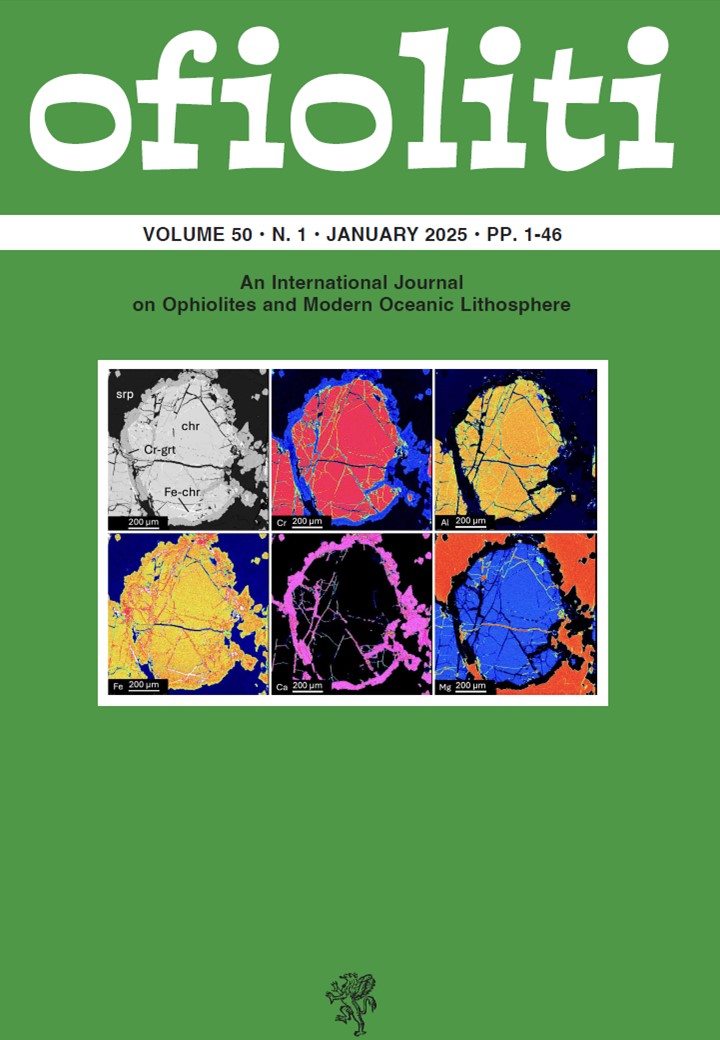PALAEOENVIRONMENTAL INTERPRETATION OF CHAOTIC COMPLEXES OF THE MELIATA UNIT (WESTERN CARPATHIANS, SLOVAKIA): NEW DATA FROM BIOCHRONOLOGY, LITHOSTRATIGRAPHY AND GEOCHEMISTRY
DOI:
https://doi.org/10.4454/ofioliti.v50i1.576Keywords:
olistostromes, radiolarians, geochemistry, palaeoenvironmental, Triassic, Jurassic, Meliata Unit, Western CarpathiansAbstract
The Meliata Unit (Meliaticum) is a remnant of the Tethyan oceanic suture occurring in the southern Western Carpathian zones. It includes the blueschist-facies Bôrka Nappe and low-grade syn-orogenic accretionary complexes, which are generally assigned to the Meliata Unit s.s. The Meliatic chaotic tectono-sedimentary units related to the closure of the Meliata Ocean include Jurassic mass-flow deposits and assorted types of tectonic mélanges. We studied several hitherto poorly known localities in southern Slovakia, which provided new information about the stratigraphy and geochemistry of the Triassic and Jurassic sedimentary formations. Litho-biostratigraphical data and component analysis reveal a dramatic change in depositional conditions likely occurring at the Triassic/Jurassic boundary, which was probably related to the onset of subduction. The trench-type Middle Jurassic sedimentation is characterised by the presence of mass-flow bodies inserted within turbiditic sequences of dark shales, sandstones, allodapic bioclastic limestones and Middle Jurassic radiolarites. Geochemical analyses indicate a mature continental provenance of the terrigenous clastic material, which was likely derived from the northern passive margin of the Meliata Ocean built by the later Central Carpathian (Austroalpine) units. Sliding blocks and breccia layers are composed of various platform and pelagic Middle-Upper Triassic carbonates, Middle Triassic and Upper Triassic radiolarites and occasionally also basalts. Subsequently, the olistostromes were tectonically reworked together with Middle Jurassic white radiolarites, crinoidal limestones and siliciclastic rocks to form heterogenous mélanges, which in part incorporated also oceanic basalts, serpentinized ultramafics and blueschist-facies metamorphic rocks exhumed from the subduction channel. Thereby, the sedimentary olistostromes and polygenous tectonic mélanges jointly form chaotic complexes that are characteristic of the Meliata Unit as a whole. With the closing of the Meliata Ocean in the Late Jurassic, the Meliata accretionary complexes were thrust over the foreland Austroalpine lower plate (Gemericum), while the suture zone underwent additional deformation stages that have even more complicated its structure.


 Edizioni ETS s.r.l. LUNGARNO MEDICEO 16 - 56127 - PISA
Edizioni ETS s.r.l. LUNGARNO MEDICEO 16 - 56127 - PISA